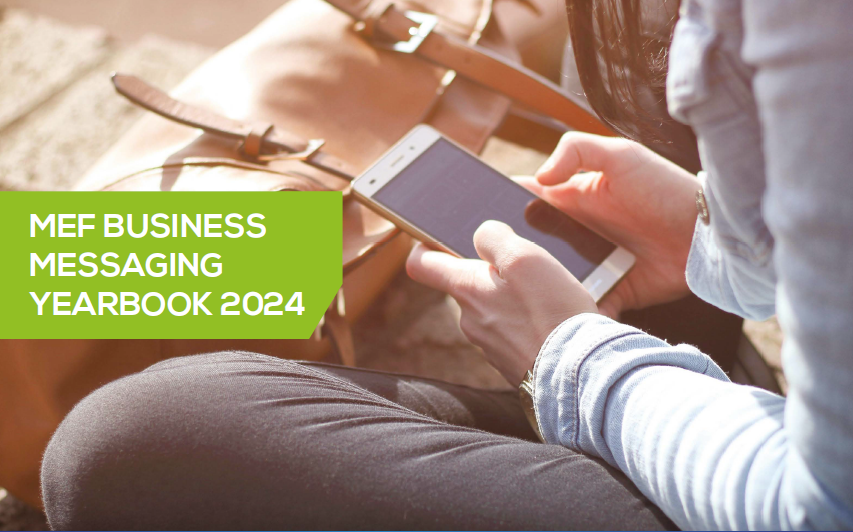
Michael Becker, discusses the ramifications of the recent T-Mobile data breach and their response and actions to aid those affected by the loss of personal data.Last week, T-Mobile acknowledges a new data breach that has affected 40M+ people, and as does every breach, the impact of this event will continue to affect them for years to come. To those impacted, T-mobile is offering a bandaid, a free McAfee Identity Protection license. Offering an identity protection monitoring service or similar bandaid following a breach is an industry-standard practice. The practice of offering the bandaid however provides little salve, what is even worse and unfortunate, as some action is better than nothing, is that most people don’t take advantage of it when it is offered.[/vc_column_text][divider line_type="No Line" custom_height="20"][/vc_column_inner][vc_column_inner column_padding="padding-2-percent" column_padding_tablet="inherit" column_padding_phone="inherit" column_padding_position="left-right" column_element_spacing="default" background_color_opacity="1" background_hover_color_opacity="1" column_shadow="none" column_border_radius="none" column_link_target="_self" gradient_direction="left_to_right" overlay_strength="0.3" width="1/2" tablet_width_inherit="default" bg_image_animation="none" border_type="simple" column_border_width="none" column_border_style="solid"][image_with_animation image_url="102086" animation="Fade In" hover_animation="none" alignment="" border_radius="none" box_shadow="none" image_loading="default" max_width="100%" max_width_mobile="default"][/vc_column_inner][/vc_row_inner][vc_row_inner column_margin="default" column_direction="default" column_direction_tablet="default" column_direction_phone="default" text_align="left"][vc_column_inner column_padding="no-extra-padding" column_padding_tablet="inherit" column_padding_phone="inherit" column_padding_position="all" column_element_spacing="default" background_color_opacity="1" background_hover_color_opacity="1" column_shadow="none" column_border_radius="none" column_link_target="_self" gradient_direction="left_to_right" overlay_strength="0.3" width="1/1" tablet_width_inherit="default" bg_image_animation="none" border_type="simple" column_border_width="none" column_border_style="solid"][vc_column_text]Is T-Mobile’s offer a start? Yes. Is it enough? In my opinion, no. We need to do more. People worldwide are concerned for their privacy and data, they have been for a long time and rightfully so as evidence by the fact that there have been more than 10,000 data breaches since 2005 and 11.5 billion breached passwords have been recorded out in the wild. And, the problem is only going to get worse as we become more and more connected in the coming years, one estimate predicts that by 2025 people will be interacting with and leaking their identity and data to IoT devices 4,800 times a day, i.e. about every 3.3 seconds (Reinsel et al., 2017), and the ITRC predicts in 2021 we’ll experience the most data breaches ever in a single year The good news is the number of people impacted will be lower than in previous years (“Data Breaches Are Up 38 Percent in Q2 2021; The ITRC Predicts a New All-Time Highby Year’s End,” 2021). People lack and want control over their physical and digital self (aka data). They want their privacy, they don’t know where to start, they lack the tools and education to manage their data.
The total cost of the potential immediate and long-term harm exposure from a breach far exceeds the $39.99/year value of the identity protection service bandaid. For many, it can take days, weeks, or even years to find out their data was compromised, and it can take many hundreds of hours and upwards of thousands of dollars to recover (“Data Breaches Are Up 38 Percent in Q22021; The ITRC Predicts a New All-Time High by Year’s End,” 2021) from a severe breach or misuse of their data. And so far we’ve just been talking about “material” past or current harms. What about future harm, i.e. lost opportunity? For example, the lost opportunity to buy a car or house, but you can’t because the breach trashed your credit score and you can’t get the inaccuracies removed. The FTC reported that 20% of people have at least one error in their credit report. Or, the opportunity that can be gained by having control over one’s data (e.g. in the form a personal data store or personal information management system) and using it to learn about one’s self, to more efficiently navigate life, or even profit from one’s own records, attributes, labor, or capital data? It’s time to give people a seat at the table The elephant in the room, and one not taken nearly seriously enough, is that our personal data has value and this data and value should be in control of the data subject, i.e. the person that it relates to or is generated by. As the former EU commissioner Maglena Kuneva noted as far back as 2009,[icon color="Accent-Color" size="small" image="fa-quote-left"] The total cost of the potential immediate and long-term harm exposure from a breach far exceeds the value of the identity protection service bandaid. For many, it can take days, weeks, or even years to find out their data was compromised"
[/vc_column_text][/vc_column][vc_column column_padding="padding-7-percent" column_padding_tablet="inherit" column_padding_phone="inherit" column_padding_position="right" column_element_spacing="default" background_color_opacity="1" background_hover_color_opacity="1" column_shadow="none" column_border_radius="none" column_link_target="_self" gradient_direction="left_to_right" overlay_strength="0.3" width="1/2" tablet_width_inherit="default" tablet_text_alignment="default" phone_text_alignment="default" bg_image_animation="none" border_type="simple" column_border_width="none" column_border_style="solid"][image_with_animation image_url="101587" animation="Fade In" hover_animation="none" alignment="" border_radius="none" box_shadow="none" image_loading="default" max_width="100%" max_width_mobile="default"][/vc_column][/vc_row][vc_row type="full_width_content" full_screen_row_position="middle" column_margin="default" column_direction="default" column_direction_tablet="default" column_direction_phone="default" bg_color="#0078c8" scene_position="center" top_padding="5" text_color="light" text_align="left" row_border_radius="none" row_border_radius_applies="bg" overlay_strength="0.3" gradient_direction="left_to_right" shape_divider_position="top" shape_divider_height="50" bg_image_animation="none" shape_type="fan"][vc_column column_padding="padding-2-percent" column_padding_tablet="inherit" column_padding_phone="inherit" column_padding_position="left" column_element_spacing="default" background_color_opacity="1" background_hover_color_opacity="1" column_shadow="none" column_border_radius="none" column_link_target="_self" gradient_direction="left_to_right" overlay_strength="0.3" width="1/1" tablet_width_inherit="default" tablet_text_alignment="default" phone_text_alignment="default" bg_image_animation="none" border_type="simple" column_border_width="none" column_border_style="solid"][/vc_column][/vc_row]Join the MEF Personal Data & Identity working group
The MEF Personal Data & Identity working group is undertaking a PD&I market assessment effort. Please reach out to Michael Becker if you have insights (consumer insight, operational insight, solutions and technical insight, use case, recommended organization and leaders) that you think can help the MEF and its members make an impact.

During Mobile World Congress 2016 we asked MEF members for their insights into the most exciting developments on show in Barcelona.
With a myriad of new handsets, technologies, VR headsets and connected devices to choose from, hear about some of the highlights and big themes from the showfloor.[/vc_column_text][/vc_column][vc_column width="1/3"][image_with_animation image_url="29051" animation="Fade In" img_link_target="_self"][/vc_column][/vc_row][vc_row][vc_column width="1/1"][divider line_type="No Line" custom_height="10"][vc_video link="https://www.youtube.com/watch?v=78Ri67bV0x4"][/vc_column][/vc_row][vc_row type="full_width_background" bg_position="left top" bg_repeat="no-repeat" bg_color="#2681c3" scene_position="center" text_color="dark" text_align="left"][vc_column width="1/1"][vc_column_text] [/vc_column_text][/vc_column][/vc_row][vc_row type="full_width_background" bg_position="left top" bg_repeat="no-repeat" bg_color="#efefef" scene_position="center" text_color="dark" text_align="left" top_padding="20" bottom_padding="20"][vc_column width="1/2"][image_with_animation image_url="27444" animation="Fade In From Bottom" img_link_target="_self" img_link="https://.env-mobileecosystemforum-premstaging.kinsta.cloud/event/27350/"][/vc_column][vc_column width="1/2"][image_with_animation image_url="28094" animation="Fade In From Bottom" img_link_target="_self" img_link="https://.env-mobileecosystemforum-premstaging.kinsta.cloud/event/mef-connects-sao-paulo-2016/"][/vc_column][/vc_row][vc_row type="full_width_background" bg_position="left top" bg_repeat="no-repeat" bg_color="#2681c3" scene_position="center" text_color="dark" text_align="left"][vc_column width="1/1"][vc_column_text] [/vc_column_text][/vc_column][/vc_row]

Amazon Echo started out as a great way to order recipe ingredients. But it might just herald the start of a post-smartphone world. Tim Green wonders whether the next new digital thing might begin in the kitchen...
Shortly after the iPad was launched, a raft of videos went onto YouTube showing confused toddlers pinching and zooming copies of Marie Claire. It had taken just a few months for kids to alter their behaviour so drastically that they couldn’t understand paper.
Seems a bit old hat now. But is another similar revolution on the way - this time involving voice?
How long will it be before your kids complain that the fridge is broken? They will rush into the room, and say: “I tried talking to it, and it didn’t say anything.” Then they will burst into righteous hysterical tears.
Yes, the rise of voice activation has got people wondering whether this UI can have the same impact as touch and swipe. And there’s one device that is leading the charge: the Amazon Echo. With little fanfare, Echo is tearing up the US market (it’s unavailable anywhere else). People absolutely love it. It’s fair to say, hardly anyone saw this coming. When Amazon first unveiled Echo in late 2014, the most common response was ‘why?’. For the uninitiated here’s what Echo was/is. It’s a voice-controlled cylindrical speaker you (usually) locate in your kitchen. Its voice assistant is called Alexa, so you can ask Alexa factual questions (how big is the earth?) or ask her to play music or set alarms or set up shopping lists. To answer all these questions, Alexa/Echo goes to the cloud and its default destination is Amazon services. So, if you want to buy something, you’ll do it from Amazon. And if you ask Echo to play AC/DC, it will cue up something it found on Prime (assuming you are a member). However, Echo also links to a range of third party services, which you can set up via a web dashboard and monitor via the Echo app. That means you can play songs from Spotify, order pizzas from Dominos and summon cabs from Uber. And it’s adding all the time. In the last few days, it’s enabled flight times. So the interesting thing is that Amazon may well have built Echo as a punt to see if it could get people to order more Amazon stuff. But it’s ended up (possibly) opening the door on a new post-smartphone world. Think about it. How do you currently listen to music, order pizzas and summon Ubers? Through the smartphone app. Battle may rage over which platform controls your choices, but whether iOS, Android, WinPho or even WhatsApp or Facebook, the phone is always the underlying platform. Echo overturns this. The analyst Ben Thompson explained on the podcast Exponent how this came to be. He reasoned that the mobile app has become all-powerful because the phone is always with you. But where is that not necessarily the case? In the home - where it’s usually charging up somewhere. Amazon - intentionally or otherwise - created the first significant comms device in a decade that doesn’t rely on the phone in some way. Of course, Amazon arrived at the Echo via a few missteps. It’s not as if the company always planned to sidestep the mobile: exhibit A - the lamentable Fire phone. But, as Thompson goes on to say, sometimes it takes an outsider to see past the status quo. So just as Microsoft couldn’t clearly see a world beyond the PC, maybe Apple and Google struggle to envision an ecosystem product that is not smartphone-centric. Amazon was able to envision Echo because it doesn’t have a mobile foundation to protect.[icon color="Accent-Color" size="small" image="fa-quote-left"] Amazon - intentionally or otherwise - created the first significant comms device in a decade that doesn’t rely on the phone in some way.
It will be fascinating to see what happens next with Echo. Aside from adding more third party services, the obvious move is adding third party hardware. This is just getting started. Last summer the firm created Amazon Voice Services to let developers build Alexa into their own devices. A few weeks back, the first product launched - Triby, a portable Bluetooth speaker you stick on the fridge. But more are coming. For example, one of the debut launch partners for AVS was Scout, which specialises in home security systems. So one can see how Echo could - stealthily - become the hub for the smart home. What a prize. Something Google thought it could claim with Nest, Apple with HomeKit and Samsung with SmartThings. Just goes to show what’s possible when you create a really easy way to play AC/DC.[/vc_column_text][/vc_column][/vc_row]Features Editor
MEF Minute

